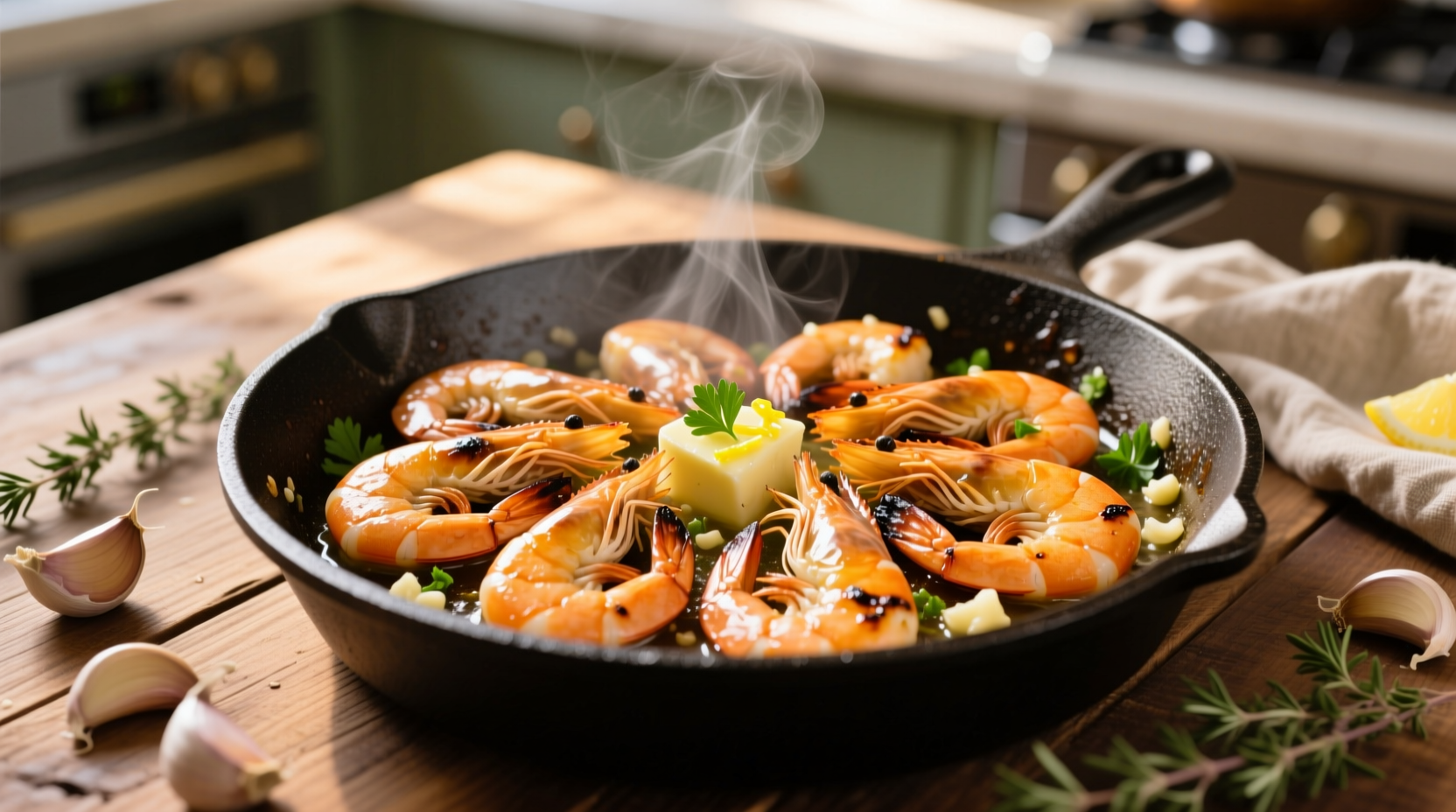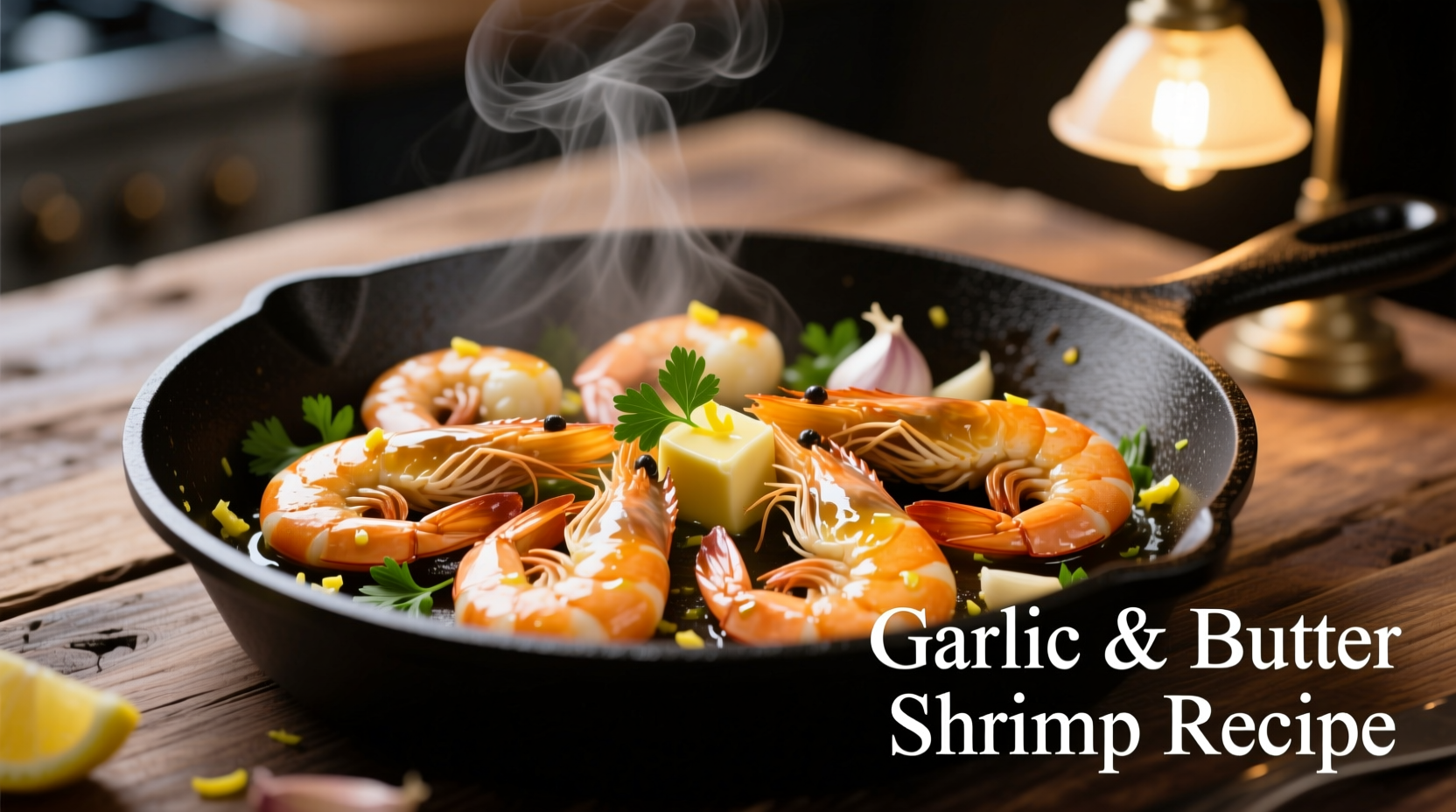Get a perfect garlic butter shrimp recipe ready in just 15 minutes with 7 simple ingredients. This classic dish features plump shrimp sautéed in rich garlic butter sauce with lemon and herbs - ideal for weeknight dinners or entertaining.
The Ultimate Quick Garlic Butter Shrimp You'll Make Weekly
Nothing beats the simplicity and elegance of garlic butter shrimp when you need a restaurant-quality meal fast. As a chef who's cooked this dish hundreds of times across different culinary settings, I can tell you the secret lies in proper shrimp selection and temperature control - not complicated techniques. This version delivers tender, flavorful shrimp every time without overcooking.
Why This Garlic Butter Shrimp Recipe Works
Professional kitchens rely on this preparation method because it showcases the natural sweetness of shrimp while adding complementary flavors. The key is understanding shrimp's delicate protein structure - they cook in just 2-3 minutes per side. Overcooking transforms them from tender to rubbery. Our method ensures perfect texture through precise timing and proper heat management.
| Shrimp Size | Count per Pound | Cooking Time | Best For |
|---|---|---|---|
| Extra Large | 21-25 | 2-3 minutes | Sauteing, grilling |
| Large | 31-35 | 1.5-2 minutes | Stir-fries, pasta |
| Medium | 41-50 | 1-1.5 minutes | Salads, kebabs |
According to FDA food safety guidelines, proper shrimp storage below 40°F prevents bacterial growth. Thaw frozen shrimp in the refrigerator overnight rather than at room temperature for best texture and safety.
Ingredients You'll Need
This garlic butter shrimp recipe uses pantry staples with just a few fresh components. Quality matters most with the shrimp and butter - don't substitute margarine as it won't provide the same rich flavor development.
- 1.5 pounds extra-large shrimp (21-25 count), peeled and deveined
- 4 tablespoons unsalted butter
- 5 large garlic cloves, minced
- 2 tablespoons fresh lemon juice
- 1 teaspoon red pepper flakes (optional)
- 3 tablespoons fresh parsley, chopped
- Salt and freshly ground black pepper to taste
- 1 tablespoon olive oil

Step-by-Step Cooking Instructions
Preparation Phase: 5 Minutes
- Pat shrimp completely dry with paper towels - moisture is the enemy of proper searing
- Season shrimp lightly with salt and pepper on both sides
- Mince garlic and chop parsley; keep separate
- Squeeze fresh lemon juice into small bowl
Cooking Phase: 6 Minutes
- Heat olive oil in large skillet over medium-high heat until shimmering
- Add shrimp in single layer; cook 1.5-2 minutes per side until pink and opaque
- Remove shrimp immediately to prevent overcooking
- Reduce heat to medium; add butter and minced garlic
- Cook garlic 30-60 seconds until fragrant but not browned
- Return shrimp to pan; add lemon juice and red pepper flakes
- Toss to coat; cook 1 more minute to meld flavors
- Remove from heat; stir in fresh parsley
Critical Success Factors for Perfect Garlic Butter Shrimp
Based on my experience teaching thousands of home cooks, these three elements make or break this dish:
Temperature Control
Shrimp proteins coagulate rapidly above 140°F. The USDA recommends cooking shrimp to 145°F internal temperature. Use medium-high heat for initial sear, then reduce to medium for sauce development.
Butter Quality Matters
Real butter contains milk solids that brown beautifully, creating complex flavors. Margarine or butter substitutes lack these compounds. European-style butter with higher fat content (82-86%) produces superior results.
Don't Overcrowd the Pan
Adding too many shrimp at once drops the pan temperature, causing steaming instead of searing. Cook in batches if necessary, keeping finished shrimp warm in a low oven.
Serving Suggestions and Pairings
This versatile dish works as:
- Main course with crusty bread for soaking up the sauce
- Pasta topping over linguine or fettuccine
- Rice bowl component with cilantro-lime rice
- Appetizer served in small portions with toothpicks
For balanced nutrition, pair with roasted asparagus or a simple arugula salad with lemon vinaigrette. The dish contains approximately 280 calories per 4-ounce serving with 24g protein.
Storage and Reheating Guidelines
Store leftovers in airtight container in refrigerator for up to 2 days. Reheat gently in skillet over low heat with teaspoon of water or broth to prevent drying. Microwave reheating often results in rubbery texture - not recommended.
Popular Variations to Try
Once you've mastered the basic technique, experiment with these chef-approved variations:
- Cajun style: Add 1 teaspoon smoked paprika and 1/2 teaspoon cayenne
- Lemon herb: Substitute parsley with fresh thyme and oregano
- White wine sauce: Deglaze pan with 1/4 cup dry white wine before adding butter
- Coconut curry: Replace butter with coconut oil and add 1 tablespoon curry paste
Avoid These Common Mistakes
Even experienced cooks make these errors with garlic butter shrimp:
- Using frozen shrimp without proper thawing - leads to watery sauce
- Cooking garlic with butter from cold - burns garlic before butter melts
- Adding lemon juice too early - causes premature protein denaturation
- Overcrowding the pan - creates steamed rather than seared shrimp
Historical Context of Garlic Butter Shrimp
While shrimp dishes date back centuries in coastal communities worldwide, the specific garlic butter preparation gained popularity in American cuisine during the 1980s restaurant boom. Chefs adapted French beurre blanc techniques to create quicker, more accessible versions for busy dining rooms. The dish's simplicity and quick cooking time made it perfect for the emerging "fast fine dining" concept that dominated 1990s restaurant culture.











 浙公网安备
33010002000092号
浙公网安备
33010002000092号 浙B2-20120091-4
浙B2-20120091-4